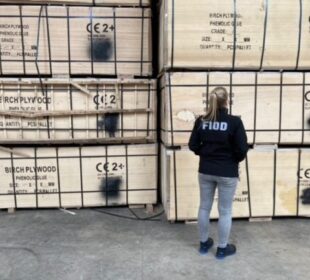- Total EU27 (i.e. excluding the UK) import value of tropical wood and wood furniture products was US$1.98 billion between January and August this year, 14% less than in 2019. This is a significantly higher level of import than forecast earlier in the year with the “Great Lockdown” having a severe impact on the wider EU27 economy and on the supply side in tropical countries.
The fact that EU27 trade in tropical wood timber products was cooling even before the onset of the COVID-19 pandemic makes this performance even more remarkable.
While imports fell sharply in May this year there was a very strong rebound in June and July. Although imports declined again in August, they were at a five year high for that month (which is typically very slow during the European summer vacation period).
The continued relative buoyancy of trade is probably partly due to the strength of the DIY sector in the EU27 during the lockdown with many people taking the opportunity to carry out home improvement work. In some EU27 countries with less stringent lockdowns, such as the Netherlands and Sweden, commercial construction and manufacturing activity also continued, at a slower pace but without interruption throughout the spring and summer months.
With the easing of lockdown measures from May onwards and boosted by the introduction of large government stimulus measures, the economy picked up across the EU27 in the third quarter. Official GDP figures have yet to be published (due early November), but according to projections by Barclays an 11.5% rebound of euro area economic activity is expected in the third quarter, led by Spain (17.9% q/q) and France (16.8% q/q). Barclays projections for third quarter rebounds in Italy (12.5% q/q) and Germany (8.2% q/q) are less dramatic but only because the initial downturn in the second quarter was more muted.
EU27 imports have also been given a boost by the relative strength of the euro on international exchange markets, the euro-dollar rate rising sharply from less than 1.10 to nearly 1.20 between May and August.
The dollar’s weakness is due to uncertainty in the run up to the presidential elections and the severity of the pandemic in the United States.
















